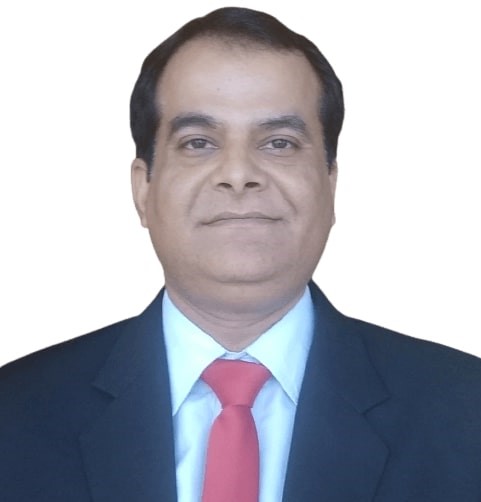A Comprehensive Analysis of Cloud Computing Services

DOI:
https://doi.org/10.54060/JIEEE/002.03.003Keywords:
Cloud computing, cloud service model, limitations of cloud computing, benefits of cloud computingAbstract
In today’s era, the term cloud computing is growing quickly which has purchased critical changes in different areas of India. It is a broadly spreading processing model that has changed the framework of Information Technology and the method of conveying the administrations. On request, benefits are given by cloud computing. One of the essential administrations that cloud computing gives is data storing. The client can get to their information when the cloud specialist co-op moderates the information. Likewise, through cloud computing suppliers, cloud computing is generally utilized by the Infor-mation Technology based new businesses which is a benefit in the advancement of their organization. In any case, its development is quickly expanding in the instruction area too. The utilization and exploration of distributed computing in training were directed through subjective philosophy. This report is an examination of the activity of cloud computing in leadership. A short overview was additionally performed to distinguish and dis-sect the benefits and hazards which distributed computing might have in the area of training. This investigation is skilled to achieve its advantages about the pro-logue to cloud computing in the administration of instruction.
Downloads
References
D. U. Salunkhe, G. Director, P. L. N. W. I. Management Development, and M. Research, Sandeep Kelkar Assistant Professor. Welingkar Institute of Management Development and Research,Mumbai.
P. Srivastava and R. Khan, “A review paper on cloud computing,” Int. j. adv. res. comput. sci. softw. eng., vol. 8, no. 6, p. 17, 2018.
K. Yadav, “Role of Cloud Computing in education,” International Journal of Innovative Research in Computer and Communication Engineering, vol. 2, no. 2, pp. 3108–3112, 2014.
Nordic Council of Ministers, “What is cloud computing?,” in Nordic Public Sector Cloud Computing – a discussion paper, Nordic Council of Ministers, 2012, pp. 15–28.
R. Kaur and S. Singh, “Exploring the benefits of cloud computing paradigm in education sector,” Int. J. Comput. Appl., vol. 115, no. 7, pp. 1–3, 2015.
S. Vennam, “What is cloud computing?,” Ibm.com. [Online]. Available: https://www.ibm.com/cloud/learn/cloud-computing. [Accessed: 02-Nov-2021].
N. B. Ruparelia, “Types of cloud computing,” in Cloud Computing, The MIT Press, 2016, pp. 25–52.
M. D. Kasi Viswanath, S. Kusuma, and S. K. Gupta, “Cloud computing issues and benefits modern education,” Global Journal of Computer Science and Technology, vol. 12, no. 10, pp. 15-20, 2012.
R. Ali, H. Zafar, “A Security and Privacy Framework for e-Learning”, International Journal for e-Learning Security (IJeLS), vol. 7, no. 2, pp. 556-566, 2018.
Sudhir Pathak ." Factors Affecting Adoption Of Cloud Computing Technology In Educational Institutions (A Case Study Of Chandigarh).” American Journal of Engineering Research (AJER), vol. 7, no. 3, pp.358-364, 2018.
T. Ercan, “Effective use of cloud computing in educational institutions,” Procedia Soc. Behav. Sci., vol. 2, no. 2, pp. 938–942, 2010.
E. Krelja Kurelovic, S. Rako, and J. Tomljanovic, “Cloud computing in education and student’s needs,” in Information & Communication Technology Electronics & Microelectronics (MIPRO), IEEE, 2013, pp. 726–731.
R. K. Awosan, “Factor Analysis of the Adoption of Cloud Computing In Nigeria,” African Journal of Computing & ICT, vol. 7, no. 1, pp. 33–42, 2014.
J. Sithipolvanichgul, C. Chen, J. Land, and P. Ractham, “Factors affecting cloud computing adoption and continuance intention of students in Thailand,” Int. J. Innov. Technol. Manage., vol. 18, no. 07, 2021.
M. P. Vaishnnave, K. Suganya Devi, and P. Srinivasan, “A survey on cloud computing and hybrid cloud,” Ripublication.com. [Online]. Available: http://www.ripublication.com/ijaer19/ijaerv14n2_13.pdf. [Accessed: 01-oct-2021].
M. Misra and P. Singh, “Energy Optimization for Smart Housing Systems,” Journal of Informatics Electrical and Electronics Engineering, vol. 01, no. 5, pp. 1–6, 2020.
R. Yadav, Department of ECE, ASET, Amity University Lucknow Campus, India, and K. K. Singh, “Study on design and simulation of temperature control system,” Journal of Informatics Electrical and Electronics Engineering (JIEEE), vol. 2, no. 1, pp. 1–4, 2021.
S. Yadav, Department of ECE, ASET, Amity University Lucknow Campus, India, and K. K. Singh, “Smart environmental health Monitoring System,” Journal of Informatics Electrical and Electronics Engineering (JIEEE), vol. 2, no. 1, pp. 1–5, 2021.
A. Rani, V. Prakash, and M. Darbari, “A Proposal for Architectural Framework Using Internet of Things with Fog Computing for an Air Quality Monitoring System,” Journal of Informatics Electrical and Electronics Engineering, vol. 02, no. 023, pp. 1–14, 2021.



























